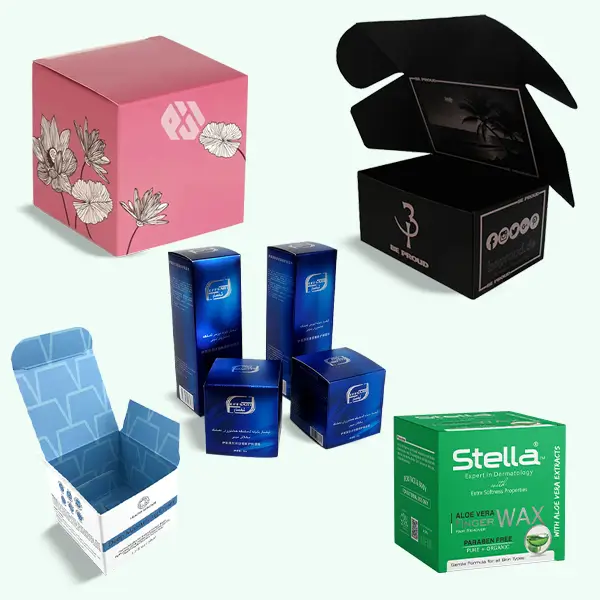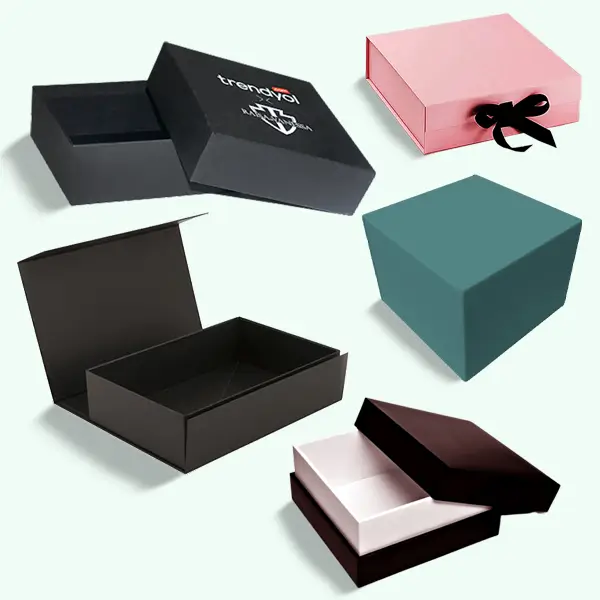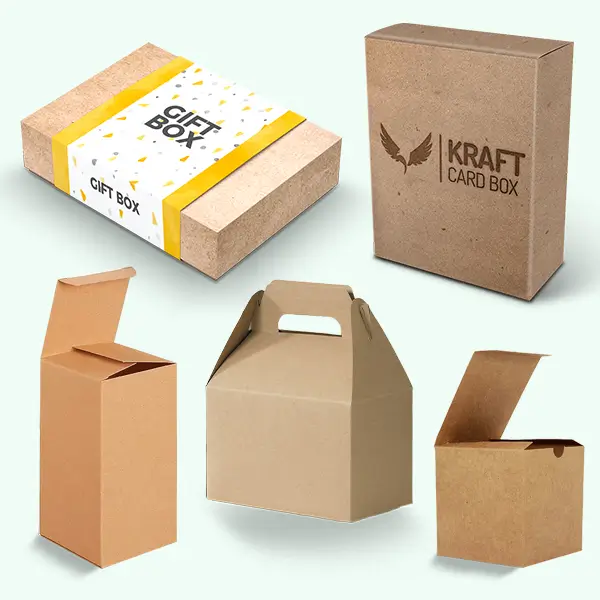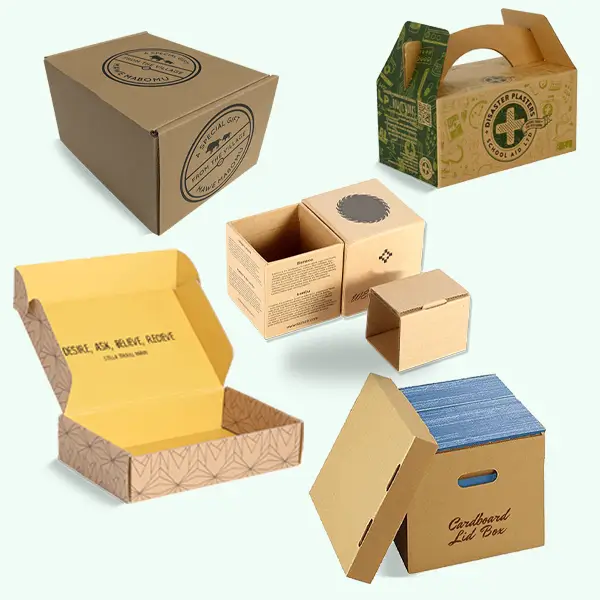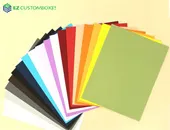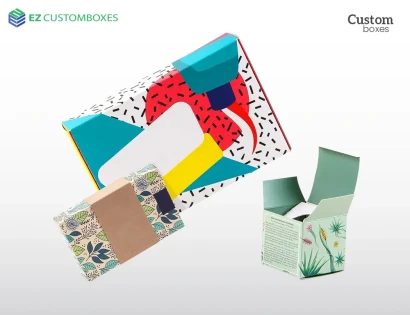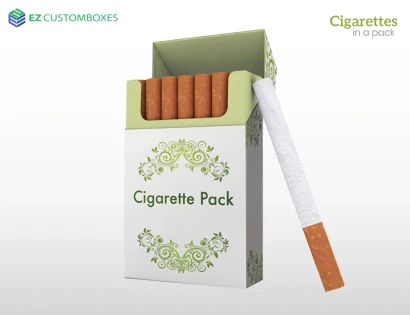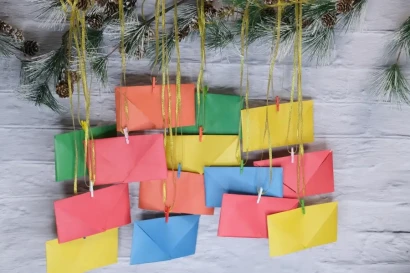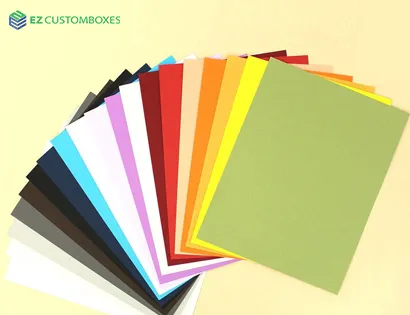1. The Basics: What Are Stock vs. Custom Boxes?
Stock Boxes
- Off-the-shelf, generic sizes (e.g., 8×8×6", 12×12×4").
- Inexpensive, readily available, quick to access.
- Minimal or no branding; basic structural strength.
Custom Boxes
- Tailored dimensions, materials, structure, and print.
- Can include internal inserts, dividers, logos, color schemes.
- Engineered for specific products and brand messaging.
2. Efficiency & Logistics: When Size Matters
Dimensional Weight & Shipping Cost
Shipping companies like UPS and FedEx figure out how much it will cost by employing dimensional weight (volume ÷ divisor). Oversized stock crates might make costs go up. Custom boxes that fit the size of the product can cut down on this "dead space" and save shipping costs.
This is backed up by academia: By changing the sizes of the boxes and employing a small range of bespoke dimensions, Amazon researchers were able to cut down on the amount of idle air space and shipments by 4.4% and 2.2%, respectively. Using machine-learning-selected box sizes, a Walmart research revealed that box use improved by 10%.
Damage Rates & Returns
Custom packaging keeps things from moving around inside the box, which cuts down on damage and returns. Using model-recommended box types cut product loss rates by 24%. Using specialized boxes, one business cut damage rates from 20% to 2%.
3. Brand & Marketing: Packaging as a Sales Channel
Increased Sales & AOV
Sales can go up a lot with well-designed packaging. The research firm NielsenIQ says that better container design can boost sales in stores by up to 30% and across all channels by 10–20%. One brand's sales went up by a huge 55% after they changed the packaging.
ROI studies are persuasive:
- According to a common ROI model, companies who move to custom boxes make an extra $42,000 to $160,000 in sales each year.
- You can make between $65,000 and $263,000 a year from custom packaging, with a ROI of between 9.8x and 34.2x.
- When you buy a lot of bespoke boxes at once, you can save 10–25% on the cost. You only need to sell 0.4% more to break even.
Unboxing Experience & Customer Perception
Branded packaging is important to customers: 52% will buy again if the packaging is high-quality, and 73% are willing to pay more for eco-friendly packaging. Reddit and e-commerce conversations show that even small things like branded tape or poly-mailers can make things seem more valuable.
4. Cost Breakdown & Payoff Timeframes
|
Cost Type |
Stock Boxes |
Custom Boxes |
|
Unit Cost |
$0.50–$1.00 |
$0.80–$1.30 (with design, die-cut, print, MOQ) |
|
Setup & Lead Time |
Immediate availability |
Weeks of design, proofing, sampling |
|
Shipping Efficiency |
Variable; oversized costs likely |
Optimized sizing saves 5–15% shipping cost |
|
Damage/Returns |
Higher due to poor protection |
Less damage seen; potential 20%→2% reduction |
|
Marketing Impact |
Minimal |
Sales uplift up to 55%, higher AOV |
|
Environment |
Mass production = inefficiency |
Right-sized, sustainable; less waste |
Even with 30–50% higher per-box cost, improved shipping, lower returns, added sales, and marketing ROI make custom packaging a strong long-term investment.
5. Sustainability: Waste or Wisdom?
Overpackaging Concerns
Too many universal boxes are a big part of the problem with cardboard waste. A classic Wired investigation discovered that Amazon often sends small things in boxes that are way too big. In addition to being environmentally unfriendly, excessive packaging can also lead to a decrease in brand recognition.
Sustainable Design
Custom boxes, especially those made from recycled materials and sized just right, cut down on a lot of packing waste. Amazon's Frustration-Free Packaging got rid of more than 1 million tons of packaging by 2024.
Closed-loop devices, such as recyclable boxes with clips or straps, can also save resources by letting you use boxes hundreds of times before throwing them away.
6. Implementation: Smart Strategies for Transition
Hybrid Approaches
Start with stock boxes + branded tape or poly-mailers. As volume and budget grow, move to partial custom (e.g., inserts) before full custom designs
Sample & Test
Always order samples. Simulate shipping conditions, weigh real packs, and test fulfillment speed. Embrace iterative improvements .
Measure ROI
Track metrics: shipping cost per package, damage rate, AOV, conversion, customer feedback. Evaluate custom packaging as an investment with ongoing benefit .
Partner Intelligently
Choose suppliers/3PLs familiar with custom packaging. A few partners even offer fulfillment systems that auto-trigger reorder when inventory dips—ensuring flow and minimizing disruptions
7. When to Choose Stock vs. Custom
Use Stock Boxes If:
- Your volume is low or products vary.
- You need boxes immediately.
- Brand and experiential unboxing aren’t central to strategy.
Opt for Custom Boxes If:
- You ship consistent, high-value, or fragile products.
- You seek brand differentiation.
- Volume supports bulk discounts and ROI.
- Sustainability is a key brand value.
8. Final Insights: Data Speaks Louder
Cost Savings & ROI: ROI multipliers of 9.8x–34.2x mean custom packaging isn’t just fluff—it’s profit-driving.
Shipping Efficiency: 5–15% shipping weight reduction and 4–10% volume usage gains mean real savings.
Damage Reduction: Up to 90% drop in returns with tailored design.
Impact on Brand and Customer: Increases in sales of up to 55%, encourages repeat business, and boosts premium brand currency.
Sustainability: Reducing waste, using recyclable or reusable systems, and using less materials.
Your Roadmap to Smarter Packaging
- Audit current packaging: dimensions, shipping cost per package, damage rate.
- Gather data: volume vs weight, returns, feedback.
- Model ROI: Include shipping cost delta, damage savings, incremental sales.
- Pilot custom designs: start with samples and limited SKUs.
- Track results: measure metrics from pack to delivery to unboxing.
- Scale wisely: expand packaging line based on solid data and brand needs.
FAQ's
-
Are custom shipping boxes worth it?
Yes, for branding and protection; not always for cost. -
What are the benefits of custom boxes?
Brand visibility, product protection, better fit, and customer experience. -
Is custom packaging worth it?
Yes, if branding and unboxing experience matter for your business. -
Why use custom mailer boxes?
For branding, security, and a better customer unboxing experience. -
Why are custom boxes so expensive?
Small runs, printing setup costs, and custom sizing/materials. -
Is it cheaper to use my own box or USPS box?
USPS flat-rate boxes are often cheaper for heavy items. -
Does UPS accept custom boxes?
Yes, as long as they meet size/weight requirements. -
Why is Japanese packaging so good?
Focus on aesthetics, precision, and customer respect. -
How much should I pay for packaging design?
$100–$1,000+ depending on complexity and designer. -
Is it cheaper to send 2 boxes or 1 big box USPS?
Usually 1 big box, but depends on size/weight zones. -
What is the most cost-effective way to ship packages?
USPS for small/light items; UPS/FedEx for large/heavy. -
Can I go to USPS and get a free box?
Yes, for Priority Mail and Flat Rate services. -
What is considered misuse of USPS boxes?
Using Priority Mail boxes for non-Priority or other carriers. -
Why customize packaging is necessary?
Differentiates brand, enhances experience, builds trust. -
Is it cheaper to ship in a box or mailer bag?
Mailer bags are usually cheaper and lighter.
Conclusion
It's not about looks when you choose between standard and custom shipping boxes; it's a business decision. Custom packaging is superior to stock boxes in terms of lowering waste, lowering damage, boosting brand value, and saving money on shipping, according to studies and case data. Custom boxes are a fantastic choice if your company ships frequently and is concerned about the environment, ROI, and the unboxing experience.

Ethan Robert works at EZ Custom Boxes as their digital marketing manager. Having a solid background in SEO, content strategy, and eCommerce growth, he specialises in using creative packaging content and data-driven campaigns to drive online visibility and brand interaction.


